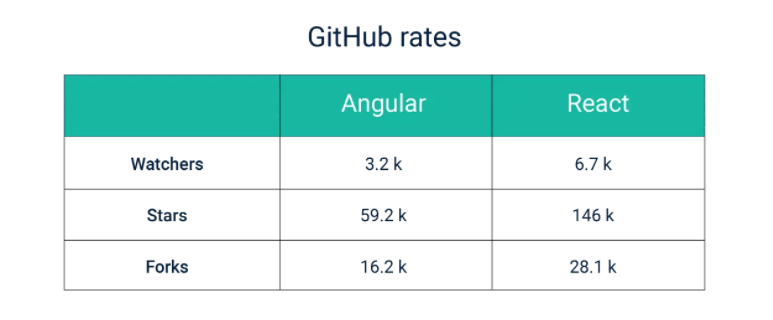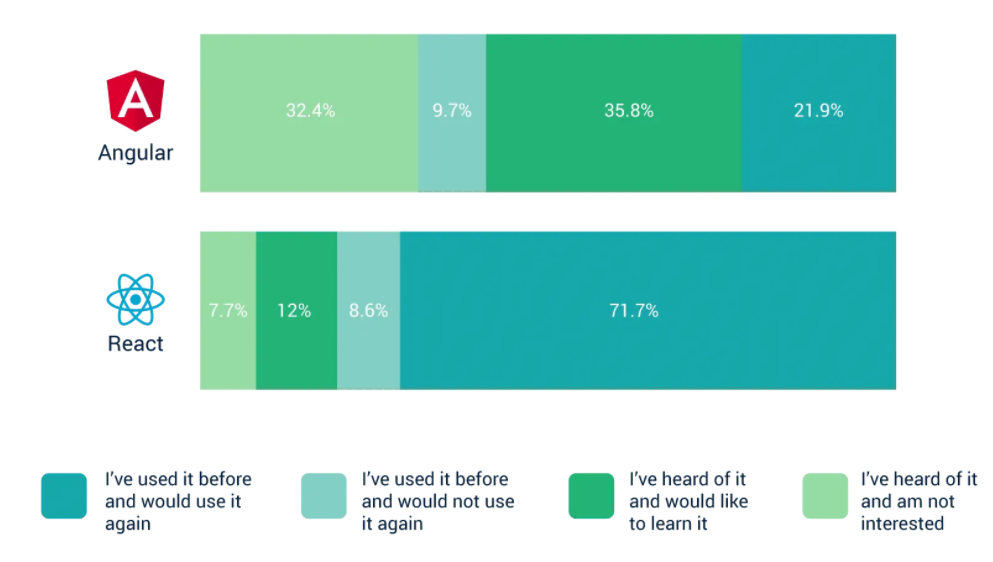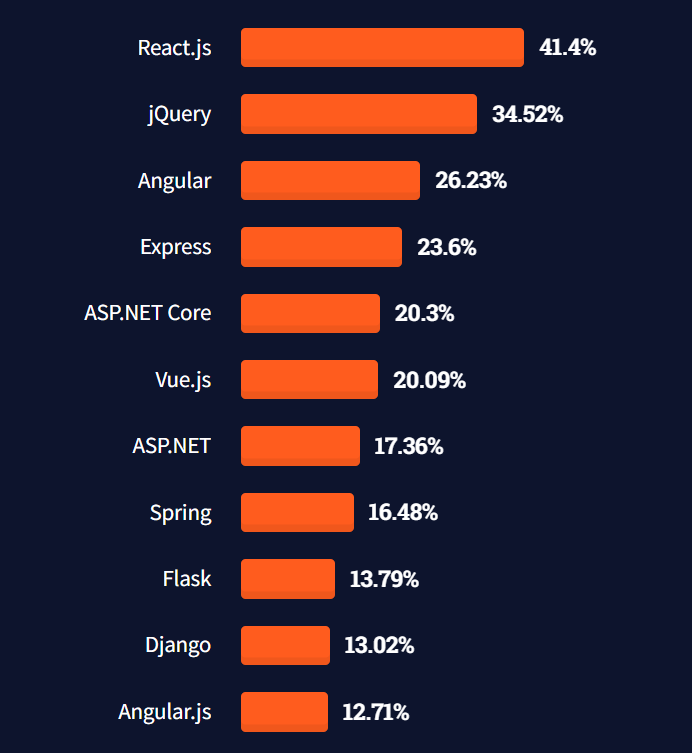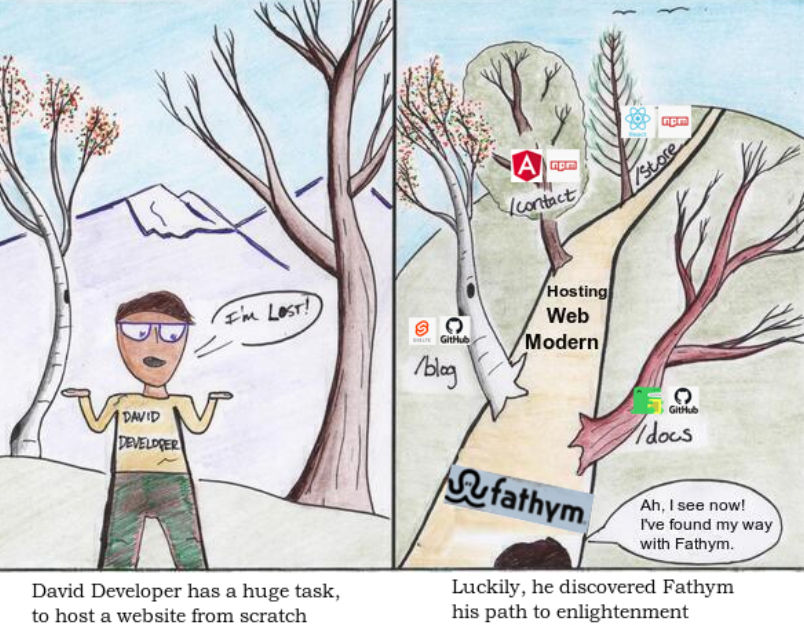Angular vs React | Whichever you choose, you can use at Fathym
February 20, 2022 by Rich Kurtzman, Brand Communications @ Fathym

If you’re a developer, you’re likely into using Angular or React, or maybe both, depending on the project.
According to Stack Overflow, React is the No. 1 used framework today while Angular is close behind at No. 3 overall. But before we get into their popularity, let’s make a quick comparison.
Angular vs React comparison
Angular
Off the top, Angular is a JavaScript framework whereas React is a JavaScript library. Angular was created and released by Google in 2010 and then reworked and re-released in 2016. The framework is currently used by Google in their Google Ads.
Overall, Angular is defined as having a steeper learning curve than React, but it’s also the one more likely to be utilized for larger-scale development. It’s known for its code consistency, for being high-performance and its ease of use once you’ve mounted that learning curve. Angular is used by big-time companies like HBO, Forbes and Sony.
React
React was created in 2013 by Facebook and is used by their Instagram as well as Netflix and Dropbox, among others.
React’s learning curve is less steep, partly because it’s not as robust as Angular.
It takes a little bit longer to set up than Angular but React can help deliver a finished product more quickly than the competitor. It also offers out-of-the-box tools and vast libraries for developers to work with. React is best used for single-page applications and when there’s a quick turnaround time for the final product. It’s best known for not only its flexibility, but for richer user interfaces, fast rendering and overall can save time vs. Angular.
Angular vs React 2018 to 2022: Popularity
According to Stack Overflow, Angular comfortably held the lead over React until 2018. That’s when the two had the same number of users. And since then, React has only continued to grow at a fast rate, becoming the most popular framework.

As you can see here, React has 146k stars and 28.1k forks compared to 79k stars and 16.2k forks for Angular. Also, there are 79k React repositories compared to 27k Angular ones. While this is somewhat imperfect, it illustrates that React is being used more on GitHub, which is what Fathym uses for our git repository.
As for actual users, a poll by Stack Overflow in 2020 indicated that 71% of users of React would use it again, compared to only 22% of Angular users. Another 12% have heard of React and want to learn it, while 36% have heard of Angular and want to learn that framework.

Angular vs React performance
One major difference between the two is DOM, or Document Object Model, in which Angular uses a real DOM and React uses a virtual DOM. If we imagine the organization of a programming interface as a tree, real DOM means making one change affects the entire tree, where virtual DOM allows the developer to change one specific element without affecting the entire tree. That means a virtual DOM (React) is better for constant/regular updates to content (Ex. Instagram feed) where a real DOM (Angular) is better suited for sites which aren’t updated often. Updating the entire tree is slower.
When it comes to tools and flexibility, React is the clear-cut winner. They give the developer a ton of libraries to work with, while Angular forces the user to embed codes within HTML.
In general, React is a faster way to create a single page, especially one with vibrant user interfaces. Angular is slower but can be used by bigger teams who are working toward the same goals.

Angular and React in Fathym
So, which one will you use; React or Angular?
The good news is, you can use one or the other, or both with Fathym. That’s thanks to the fact that Fathym is a micro-frontends platform.
What are micro-frontends? Simply, it’s breaking down monolithic frontends into smaller pieces. That means individual developers or teams can work on their own projects – like a Blog or Photo Gallery – while others are working on, say, the e-commerce store. And everything comes together seamlessly in a single site.
Our working analogy is this: Imagine an aspen grove, where all the individual trees are tied together in one, massive root system. So, really, they are all one living entity (your site or application). Now, imagine that aspen grove but where all the trees are different species -- lodgepole pine, maple, aspen etc. -- representing the different projects you can host on individual “routes” in Fathym.
The reason they are different species of trees is because you, the developer, can use a GitHub repo for one piece of your site (/blog) and NPM for another (/store). And maybe more powerfully, you can also use different frameworks for each piece of your site. For example, use React for /blog and Angular for /store. Again, to your site visitors it looks and feels like a normal site. But with Fathym, you can harness micro frontends to scale your software delivery across independent, autonomous teams.
In terms of Angular and React, Fathym has engineers who use both.
For instance, our senior engineers use Angular for much of the Fathym application. Meanwhile, many of our junior engineers often use React – simply because they know the language better – to create smaller projects and other components. Our engineering team uses one or the other, or both, depending on the project.
So, Angular vs React? With Fathym, it doesn’t have to be an either/or situation.
Join Fathym
Now in the user-adoption phase, we encourage you to join today for free!
